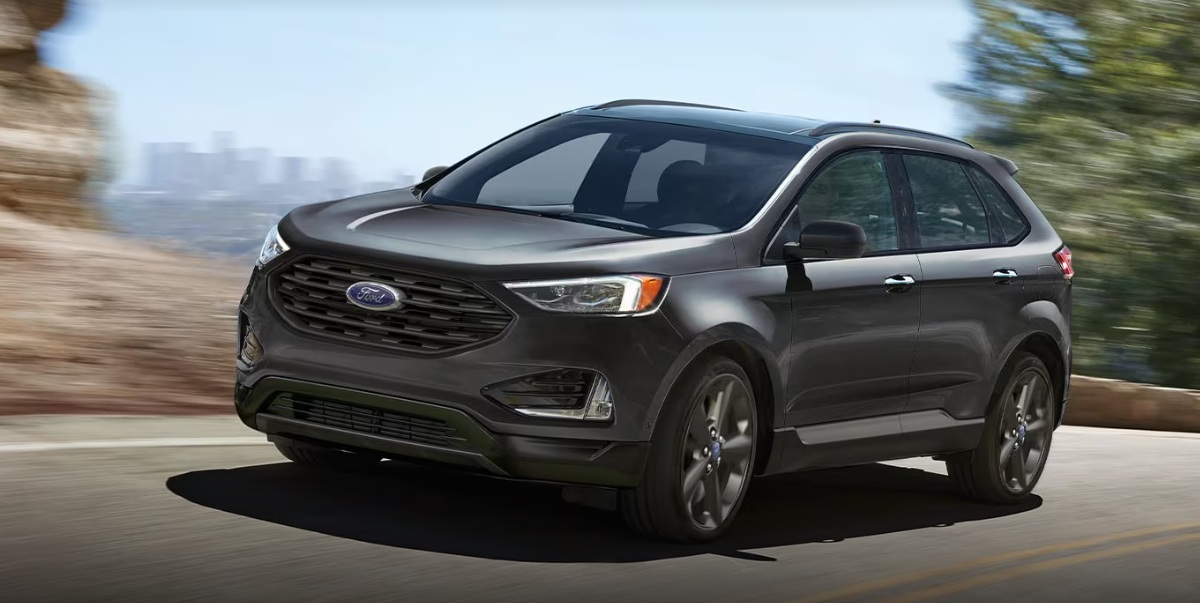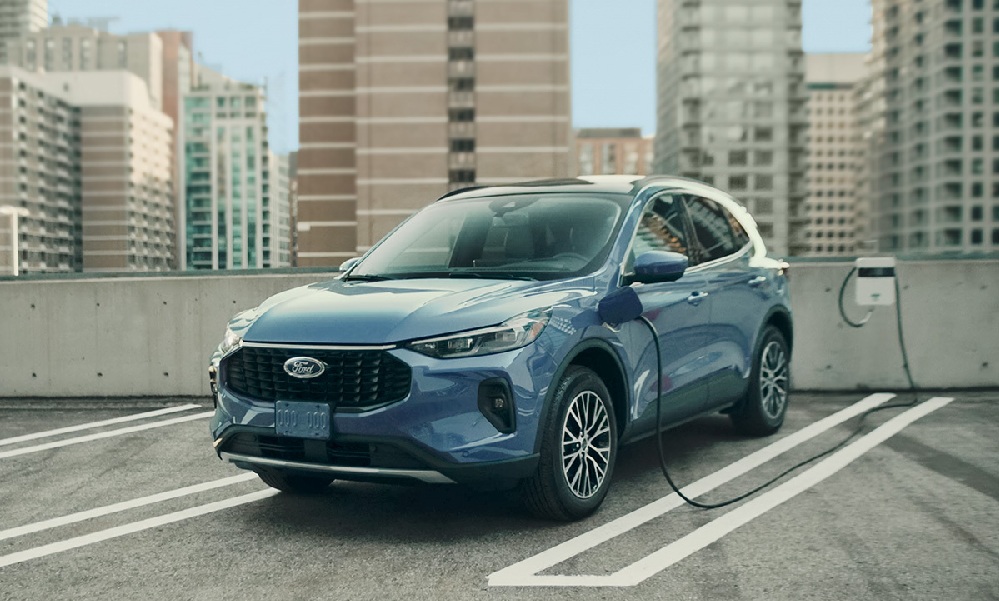The 2025 Ford Edge: What Makes This Vehicle A Midsize SUV?
In the ever-evolving landscape of sport utility vehicles, the Ford Edge stands as a testament to the Ford commitment to providing versatile, capable, and stylish transportation options. As consumer preferences continue to shift toward SUVs of various sizes, understanding what makes the Edge a midsize SUV—and why that classification matters—becomes increasingly important for potential buyers … Continued
In the ever-evolving landscape of sport utility vehicles, the Ford Edge stands as a testament to the Ford commitment to providing versatile, capable, and stylish transportation options. As consumer preferences continue to shift toward SUVs of various sizes, understanding what makes the Edge a midsize SUV—and why that classification matters—becomes increasingly important for potential buyers navigating this crowded market segment.

What Makes the Ford Edge a Midsize SUV?
The automotive industry categorizes SUVs based on several key factors, including physical dimensions, interior space, seating capacity, and cargo volume. The Ford Edge firmly establishes itself in the midsize category through these defining characteristics.
Dimensions That Define
With a length of 188.8 centimetres, width of 75.9 centimetres, and height of 68.3 centimetres, the Ford Edge occupies the sweet spot between compact SUVs and full-size models. These proportions give the Edge a substantial road presence without making it unwieldy in urban environments or tight parking spaces.
In the Ford SUV lineup, the Edge sits comfortably between the compact offerings like the Escape and Bronco Sport and the larger three-row Explorer and Expedition models. This positioning reinforces its classification as a midsize SUV—larger than the entry-level options but more manageable than the family-oriented three-row vehicles.
Practical Interior Space
Interior volume is another critical factor in determining SUV classifications. The Ford Edge offers a passenger volume of 110 cubic feet (3,115 litres), providing comfortable accommodation for five adults. This spaciousness exceeds what is typically found in compact SUVs, while maintaining a more intimate cabin environment than larger three-row vehicles.
Cargo Capacity
Cargo space remains one of the most practical considerations for SUV buyers, and the Edge delivers impressive utility in this regard. With all seats in use, the Edge provides approximately 39.2 cubic feet (1,110 litres) of cargo space behind the second row—plenty of room for luggage, groceries, or sports equipment.
When more cargo capacity is needed, folding the rear seats expands the available space to 73.4 cubic feet (2,078 litres), offering substantial versatility that rivals some larger SUVs. This balance of passenger comfort and cargo utility is a hallmark of the midsize SUV category.
The Purpose and Appeal of Midsize SUVs
Understanding the purpose of midsize SUVs helps explain the enduring popularity of vehicles like the Ford Edge. These vehicles offer a balance of attributes that appeal to a diverse range of consumers.
The Perfect Compromise
Midsize SUVs like the Edge occupy a goldilocks zone in the automotive market—not too big, not too small. They offer more space and capability than compact models without the bulk and fuel consumption of full-size SUVs. For many Canadian households, this represents an ideal compromise.
The Edge exemplifies this philosophy by offering ample passenger space, significant cargo capacity, and available all-wheel drive capability, all without excessive exterior dimensions that would make daily driving and parking challenging.
Versatility for Various Lifestyles
The versatility of midsize SUVs makes them suitable for diverse lifestyles and use cases. The Ford Edge is equally comfortable serving as:
- A family vehicle with room for children and associated gear
- A comfortable commuter with elevated seating position and modern amenities
- A weekend adventure vehicle with cargo space for outdoor equipment
- A capable all-weather vehicle with available intelligent all-wheel drive
This adaptability to different needs explains why midsize SUVs have become staples in driveways across Canada, from urban centres to suburban neighbourhoods.
2025 Ford Edge: Updated Features and Capabilities
The Ford Edge builds upon its midsize SUV foundations with a range of features and capabilities designed to enhance comfort, convenience, and performance.
Powertrain Options
The Edge is expected to feature a capable Twin-Scroll 2.0-litre EcoBoost engine, producing approximately 250 horsepower. This turbocharged powerplant offers a compelling blend of performance and efficiency, complemented by an 8-speed automatic transmission that ensures smooth power delivery.
For those seeking more exhilarating performance, higher trim levels may offer more powerful engine options, potentially including a twin-turbocharged V6 in performance-oriented variants. This range of powertrain choices enables buyers to select the Edge version that best suits their driving preferences and needs.
Technology and Connectivity
The Edge embraces modern technology with an extensive suite of connectivity and driver-assistance features. The infotainment system supports both Apple CarPlay and Android Auto, ensuring seamless integration with smartphones. A large touchscreen interface serves as the central command center for vehicle functions and entertainment options.
Safety features are equally impressive, with the Ford Co-Pilot360 suite of driver-assistance technologies providing enhanced awareness and protection. These systems work together to make the Edge both safer and more convenient to drive in various conditions.
Interior Refinement
Inside, the Edge presents a refined environment with high-quality materials and thoughtful design. The cabin features comfortable seating for five passengers, with ample head and legroom in both rows. Careful attention to noise isolation results in a quiet interior that enhances the premium feel of the vehicle.
Storage solutions abound throughout the cabin, with clever compartments complementing the substantial cargo area. These practical touches highlight the focus on everyday usability—a key attribute for midsize SUV buyers.
Compare Midsize and Small SUVs: What are the Differences?
To fully appreciate what makes the Ford Edge compelling as a midsize SUV, it’s valuable to contrast it with smaller SUV offerings. These differences influence everything from driving dynamics to practicality, helping buyers determine which category best suits their needs.
Size and Space Differences
Compact SUVs like the Ford Escape typically measure around 180.5 centimetres in length, compared to the Edge at 188.8 centimetres. This additional length translates to more interior volume, particularly in the cargo area. While the Escape offers approximately 34 cubic feet (963 litres) behind its second row, the Edge provides a more generous 39.2 cubic feet (1,110 litres).
The width difference is also significant, with the 75.9-centimetre width exceeding the Escape’s 74.1 centimetres. This additional width creates more shoulder room for passengers, enhancing comfort during long journeys.
Practical Implications
These dimensional differences have practical implications for everyday use. The additional cargo space in midsize SUVs like the Edge means:
- Easier accommodation of larger items like strollers or sports equipment
- More comfortable road trips with room for luggage and supplies
- Greater capacity for home improvement materials or outdoor gear
- Reduced need to compromise between passenger seating and cargo
For families or individuals with active lifestyles, these practical advantages often justify the step up to a midsize model like the Edge.
Performance and Capability
Midsize SUVs typically offer more robust powertrains than their compact counterparts. The Edge, with its 250-horsepower EcoBoost engine, delivers more muscular performance than many compact models. This power translates to more confident highway passing, easier towing, and a more substantial driving experience.
Towing capacity represents another significant difference. While many compact SUVs are limited to approximately 680 kg (1,500 lbs) of towing capacity, the Edge can handle up to 1,588 kg (3,500 lbs) when properly equipped. This capability enhances the vehicle’s versatility for owners who require towing small trailers, boats, or recreational equipment.
Comfort and Refinement
The additional size of midsize SUVs often allows for more sophisticated suspension systems and better noise isolation. The Edge benefits from this scale advantage, delivering a more composed ride quality and quieter cabin compared to smaller SUVs. These refinement factors significantly contribute to the impression of value and satisfaction over the years of ownership.
Who Should Consider the 2025 Ford Edge?
The midsize SUV category serves specific consumer needs, and the Ford Edge is particularly well-suited to certain buyer profiles.
Ideal for Growing Families
Families with growing children will appreciate the spacious interior and substantial cargo capacity. The vehicle provides ample room for children to grow, along with space for the gear that accompanies family life, from sports equipment to groceries and luggage for vacation trips.
Perfect for Active Lifestyles
Individuals and couples with active lifestyles find midsize SUVs like the Edge ideal for their needs. The cargo area accommodates outdoor gear, including camping equipment, bicycles, and other recreational items. The available all-wheel drive system provides confidence in reaching outdoor destinations, even in challenging conditions.
Comfortable for Commuters
The elevated driving position, comfortable interior, and modern technology make the Edge an excellent choice for daily commuting. The driver-assistance features reduce fatigue on longer drives, while the refined ride quality makes time spent in traffic more bearable.
2025 Ford Edge: A Capable Midsize SUV
The Ford Edge exemplifies the virtues that have made midsize SUVs so popular with Canadian consumers. By striking a thoughtful balance between size and maneuverability, capability and efficiency, the Edge offers a compelling package for a wide range of buyers.
In a market segment defined by compromise, the Edge stands out by minimizing those compromises. It delivers substantial space and capability without excessive bulk, modern technology without overwhelming complexity, and driving enjoyment without sacrificing comfort.
For those navigating the complex world of SUV shopping, understanding what makes the Edge a midsize SUV—and what that classification means in practical terms—provides valuable context for making an informed purchase decision. The dimensional differences, cargo capacity variations, and performance distinctions between midsize and compact SUVs represent meaningful factors that influence day-to-day ownership experience.


